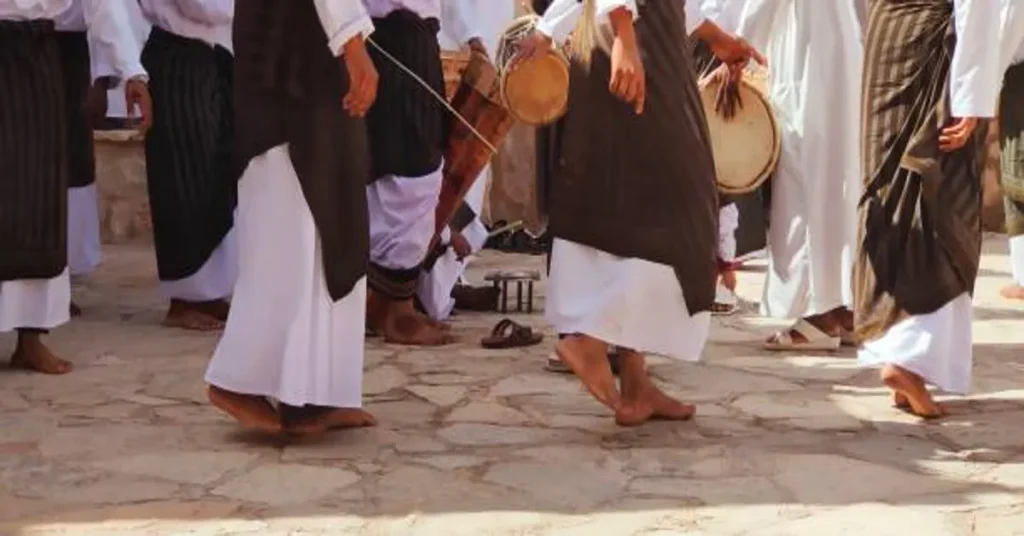In a world dominated by fast-changing trends, Byadi stands out as a timeless reminder of how art connects people, stories, and generations. This captivating craft combines centuries-old traditions with the spirit of modern creativity, transforming simple materials into masterpieces that narrate cultural tales.
From intricate carvings to bold contemporary designs, Byadi has evolved into more than an art form—it’s a bridge between the wisdom of the past and the imagination of the present. It is living proof that even as the world rushes forward, heritage can thrive through innovation.
This article explores the multifaceted world of Byadi, tracing its roots, cultural significance, artistic transformation, and enduring role in empowering communities and inspiring future generations.
Origins of Byadi: A Legacy Carved from Heritage
The story of Byadi begins deep within the heart of ancient craftsmanship. Historically, this art form emerged from small artisan villages where creativity was intertwined with daily life. Each Byadi piece was not merely decorative—it told a story, preserved a belief, or celebrated an important event.
Passed down through generations, the techniques behind Byadi were once carefully guarded family secrets. Every pattern had meaning: floral motifs symbolized prosperity, while geometric designs reflected harmony and balance. For artisans, Byadi was a language of emotion and storytelling, capturing the pulse of their culture in vivid textures and colors.
As trade routes expanded, Byadi began to evolve, incorporating influences from other regions and civilizations. The craft became a tapestry of shared ideas—proof that art transcends boundaries.
Byadi as a Storytelling Medium
What sets Byadi apart is its role as a storyteller. Each creation serves as a visual narrative—expressing myths, moral lessons, or historical moments through design and color.
A single Byadi sculpture or mural might depict the story of a local hero, the rhythm of rural life, or scenes from ancient epics. Even today, artisans view their work as living documentation, preserving cultural identity while inviting interpretation from each new generation.
Through festivals, exhibitions, and workshops, communities keep these stories alive, encouraging participation from youth and travelers alike. In this way, Byadi not only honors history but also ensures its continuity through shared experience.
The Craftsmanship Behind Byadi: Techniques and Materials
Behind every Byadi creation lies immense skill and patience. Traditional artisans rely on techniques perfected through centuries of trial and refinement.
Most Byadi pieces begin with raw natural materials—local woods, clay, metals, and organic dyes—each chosen for its texture and durability. Craftsmen carve, mold, or weave with precision, ensuring that every detail captures emotion and symbolism.
Hand tools are often preferred over machines, allowing artisans to retain a personal touch. The rhythmic tapping of chisels or the soft hum of polishing cloths echo in workshops where art and devotion intertwine.
In coloring, eco-friendly plant and mineral-based dyes remain the standard. This sustainable approach preserves the authenticity of the art while minimizing environmental impact. Every hue used in Byadi tells its own story—reds for vitality, blues for peace, and golds for wisdom.
The Modern Reinvention of Byadi
In the 21st century, Byadi has experienced a creative revival. Modern artists are reimagining traditional craftsmanship through digital tools, contemporary designs, and mixed-media innovations.
While the soul of Byadi remains rooted in tradition, new techniques—like 3D printing, laser engraving, and digital design—allow artisans to push boundaries and reach global audiences. Artists are also collaborating with architects and designers to integrate Byadi-inspired motifs into modern interiors, fashion, and branding.
Social media has become an unexpected ally in this artistic resurgence. Platforms like Instagram and Pinterest have introduced Byadi to younger audiences, turning it from a regional art form into an international sensation.
Yet, amid this modernization, the core of Byadi remains unchanged—creativity guided by respect for heritage.
Prominent Byadi Artists and Their Innovations
Several visionary artists have brought new light to Byadi, each weaving their own story into this cultural fabric.
- Nayana Kumar blends traditional storytelling with bold color palettes, using natural motifs to express contemporary themes of empowerment and renewal.
- Ravi Menon introduces sustainability into his Byadi pieces, using recycled metals and wood to promote environmental consciousness without compromising on artistry.
- Anika Desai, known for her minimalist approach, strips traditional patterns down to their essence—proving that simplicity can be just as expressive as complexity.
These artists demonstrate how Byadi is not confined by time or geography—it continues to adapt, challenge, and inspire.
Byadi’s Role in the Community and Economy
Beyond aesthetics, Byadi plays a vital role in uplifting local economies and strengthening cultural identity. Many artisan families depend on this craft for their livelihood. By preserving and promoting it, communities ensure both financial stability and intergenerational skill transfer.
Workshops teach children and young adults not only how to craft art but also how to sustain it as a profession. Byadi fairs attract tourists, boosting local commerce while spreading appreciation for the culture it represents.
Moreover, the art form fosters unity. Collaborative projects bring together artisans, students, and entrepreneurs, creating a shared sense of purpose and pride.
In rural communities, where opportunities can be scarce, Byadi provides hope—a reminder that heritage can build futures as much as it preserves the past.
The Global Appeal of Byadi
As the world rediscovers handmade and culturally rooted art, Byadi is gaining international attention. Art collectors and designers worldwide appreciate its authenticity, while museums feature it as a symbol of cultural resilience.
Exhibitions across Europe, Asia, and the Americas have showcased Byadi installations, proving that this traditional art form resonates far beyond its origins. Its universal themes of harmony, perseverance, and storytelling make it a language anyone can understand.
Challenges in Preserving Byadi’s Authenticity
Despite its growing popularity, Byadi faces challenges. The rise of mass-produced imitations threatens the value of authentic handmade pieces. Additionally, younger generations sometimes favor modern careers over traditional crafts, leading to a decline in apprenticeship participation.
However, cultural institutions and NGOs are stepping in to support artisans through grants, fair trade initiatives, and online marketplaces. By integrating technology with traditional methods, they’re ensuring that Byadi continues to thrive sustainably.
Conclusion: The Enduring Power of Byadi
At its heart, Byadi is more than an art form—it’s a celebration of heritage, creativity, and human connection. From its ancient origins to its modern reinvention, it continues to capture imaginations through stories told in color, texture, and design.
In every carving, brushstroke, and weave lies a lesson in patience, pride, and purpose. Byadi bridges eras, linking the wisdom of ancestors with the innovation of today’s creators.
As communities, artists, and admirers come together to protect and promote this beautiful craft, Byadi stands as a living testament to how culture can evolve without losing its soul.
The world may change, but the art of Byadi endures—forever telling stories that speak to the heart.
FAQs About Byadi
1. What is Byadi?
Byadi is a traditional art form that blends storytelling with craftsmanship, using natural materials and intricate designs to depict cultural, historical, and mythological narratives.
2. Where did Byadi originate?
Byadi originated in ancient artisan communities, particularly in regions known for woodcraft and folk artistry. It evolved through generations, adapting influences from various cultures along trade routes.
3. How is modern Byadi different from traditional forms?
Modern Byadi combines traditional handcrafting methods with new technologies like laser engraving, digital design, and sustainable materials, creating art that appeals to contemporary audiences.
4. Why is Byadi important for cultural preservation?
Byadi preserves ancestral stories and values, passing them down through visual narratives while providing economic support to local artisans and communities.
5. How can people support Byadi artisans?
Supporting Byadi can include purchasing authentic handmade pieces, attending exhibitions, sharing artists’ work online, or participating in cultural initiatives that promote traditional craftsmanship.
Final Thought:
The enduring beauty of Byadi lies in its ability to evolve without forgetting where it came from. It teaches us that art is not just about aesthetics—it’s about identity, continuity, and the timeless stories that shape who we are.

